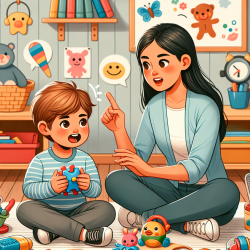Stuttering in older children (ages 7-14) presents unique challenges and opportunities for speech therapy. Traditional methods often fall short due to a lack of motivation and engagement from the children themselves. However, a pioneering study by Shenker et al. (1983) introduces a novel approach: peer-mediated intensive stuttering therapy. This method not only addresses the technical aspects of speech therapy but also leverages the motivational and social benefits of peer involvement.
The study involved a three-week intensive program where children participated in 40 hours of fluency training. This training emphasized slow speech rate, breath stream management, and easy speech initiation. A distinctive feature of this program was the inclusion of peer-mediated practice, which aimed to boost motivation and encourage self-monitoring among the participants. The results were promising, with most children maintaining the gains from therapy at a three-month follow-up.
For practitioners looking to improve their approach to stuttering therapy for older children, this study offers several key takeaways:
- Intensive Practice: Short-term, intensive therapy sessions can be more effective than traditional, spread-out sessions. This format helps maintain high levels of motivation and engagement.
- Peer Involvement: Involving peers in the therapy process can enhance motivation and accountability. Children take on the role of both the observer and the observed, which encourages active participation and fosters a supportive environment.
- Parental Engagement: The program also emphasized the importance of family involvement. Parental participation in evening sessions and practice at home was crucial for reinforcing the skills learned during therapy.
- Focus on Transfer Activities: Incorporating activities that mimic real-life situations (e.g., ordering food at a restaurant) helps with the transfer of fluency skills outside the clinical setting.
This peer-mediated approach to stuttering therapy represents a significant shift from traditional methods, focusing not just on the stuttering itself but also on the social and motivational aspects that are critical for older children. By adopting some of these strategies, practitioners can enhance their therapy programs, making them more engaging and effective for their clients.
For those interested in exploring this innovative approach further and understanding the detailed outcomes of the study, please follow this link: A Peer Mediated Approach to Intensive Stuttering Therapy for Older Children: Results of a Pilot Study.










